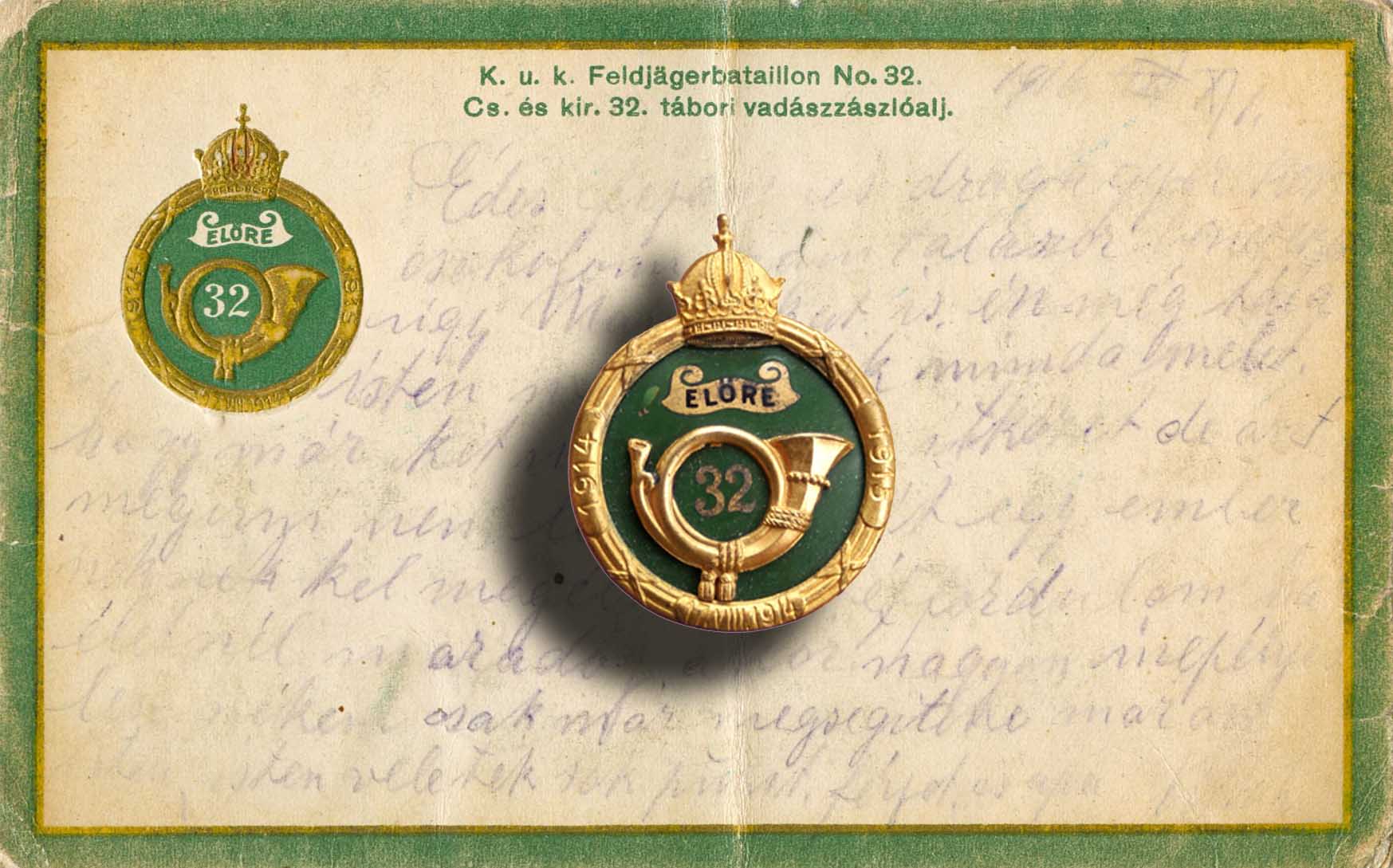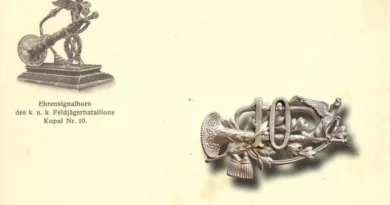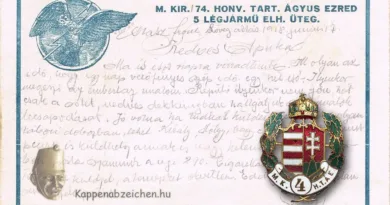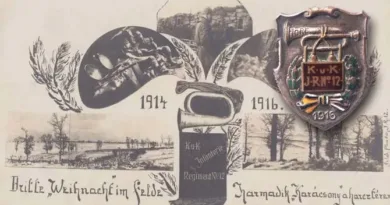32nd Jäger Battalion
The 32nd Jäger Battalion’s recruitment area was the territory of the VI. Corps in North-East Hungary. The command of the unit was placed in Eperjes (today Presov).
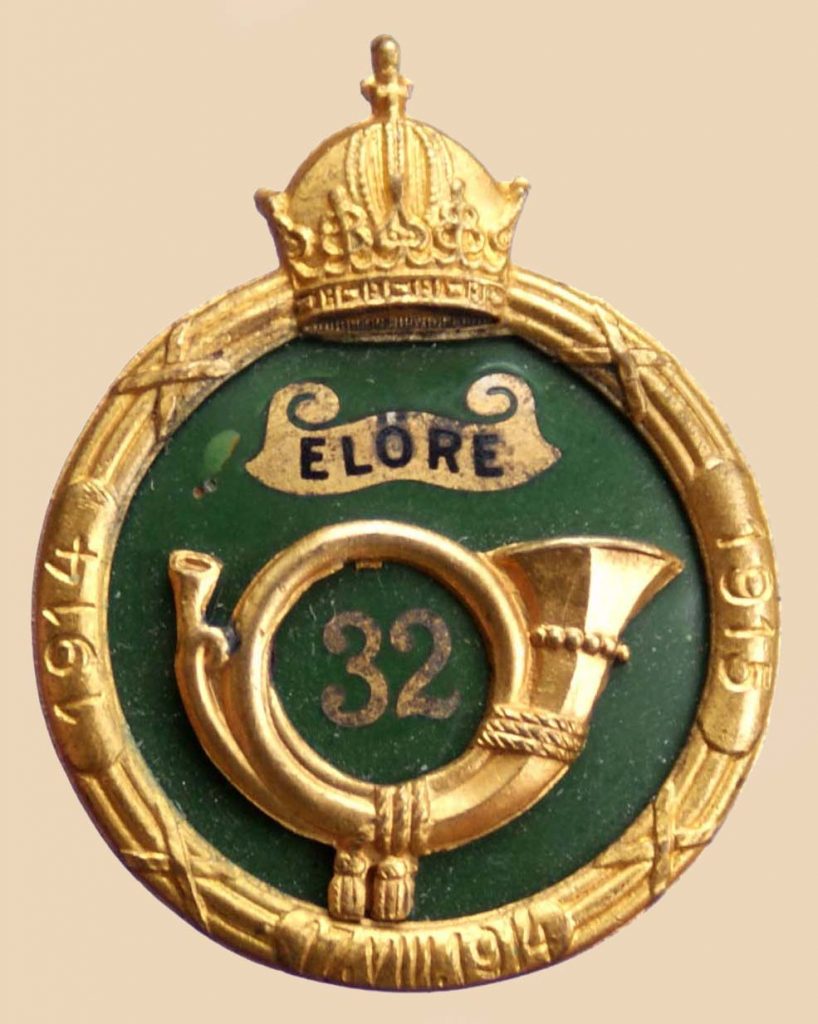
At the time of the 1914 mobilization, the unit was subordinated to the 5th Honvéd Cavalry Division. The baptism of fire was obtained under critical conditions on August 17, 1914. This date is also depicted on the Kappenabzeichen. It is the date of the division’s disastrous attack at Gorodok. After the attack that cost heavy casualties, the retreating division was secured by the 32nd Jäger. This maneuver wasn’t undisturbed either. The cavalry, confused during the day, panicked and ran apart during the night from a perceived attack by Russian Cossacks. The 32ers had to restore order. On August 25, the unit was in a major battle with the 38th Honvéd Infantry Division at Podhajca. The attacking Russians were only intercepted here at a loss of 40% of staff. It was in this battle that they suffered the greatest bloody loss. They then participated in the defense of the Carpathians and then in the great offensive in May 1915.
In 1916, the unit suffered heavy losses during the Brusilov offensive. In September, they were involved in stopping the forward Russians on the Lysonia high ground near Brzezany. Later in the year, in 1917, the battalion fought on the Russian front at the Strypa and Zbrucz rivers. After the Russian peace treaty, it was part of the occupation force in Ukraine. In August 1918, the battalion was deployed to the Italian front.
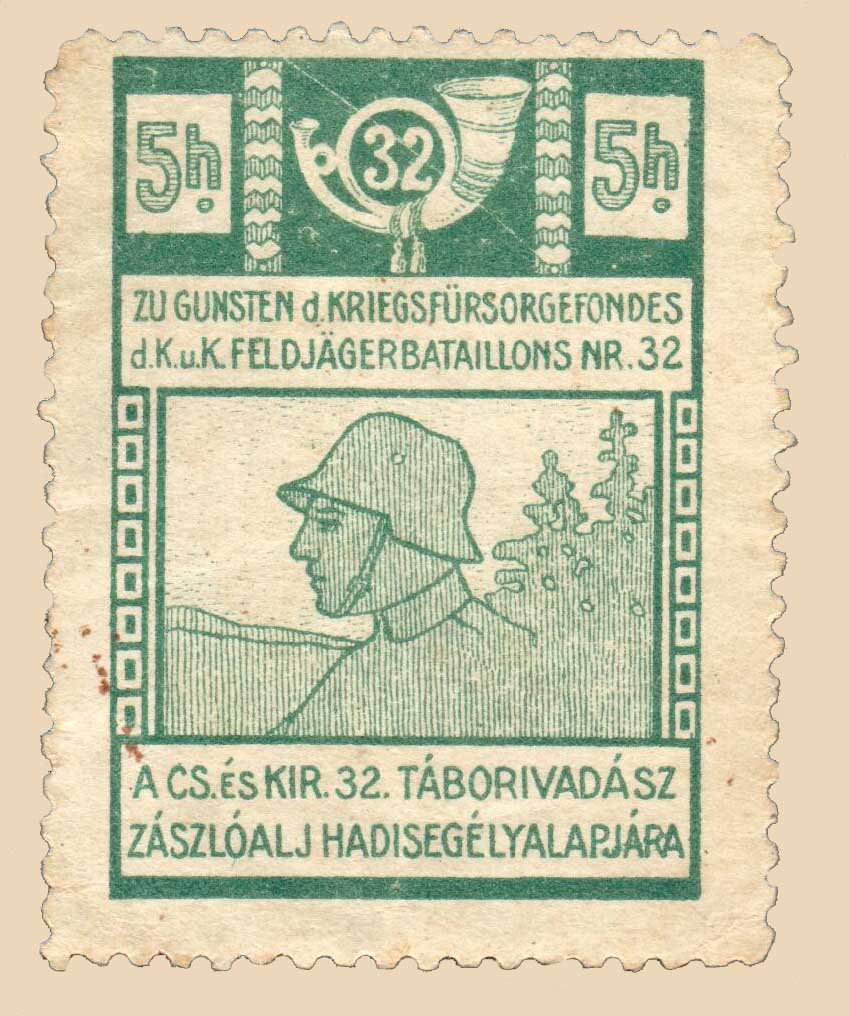
In addition to the badge card, I can also present a letter-closing from Gábor Csiszér’s collection. It’s decorated with the battalion’s little horn badge. The horns have been said about in the post of the 26th Jäger.

